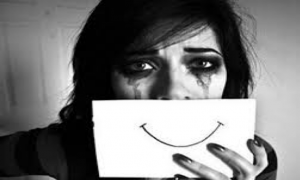ACCORDING to the latest National Health Survey, in 2017–18, just over one in 10 Australians (10.4%) had depression or feelings of depression (an increase from 8.9% in 2014–15), affecting the quality of life of over 2 million people. Mental and substance use disorders, including depression, anxiety, and drug misuse, together confer the third highest burden of disease and are the leading cause of non-fatal disability in Australia For people living in rural or regional areas, this burden may be compounded by lesser access to specialised mental health care.
“Over 10% of Australians report feelings of depression”
Although there are a number of established treatments for depression, a sizeable proportion of patients still fail to adequately improve. In the largest and most comprehensive study conducted to date to evaluate the response to antidepressant medications prescribed in real-world clinical practice, approximately 55% of patients failed to recover with the first trial of antidepressant medication.
“55% of patients failed to recover with the first trial of antidepressant medication”

A further study produceda conservative estimate that around one-third of patients still did not reach remission after four trials of different antidepressant medication classes. Many more patients fail to complete a course of antidepressants due to intolerance of side effects. While electroconvulsive therapy stands as the most effective treatment for depression, with response rates of approximately 70% of patients, treatment uptake and adherence are constrained by patient concerns over cognitive side effects as well as need for hospitalisation and a specialised treatment unit.
“One-third of patients still did not reach remission of symptoms after four trials of different antidepressant medications”
The development of novel, non-convulsive brain stimulation therapies such as repetitive transcranial magnetic stimulation and transcranial direct current stimulation (tDCS) over the past two decades holds great promise in offering a new class of treatments that are non-invasive, well tolerated and have minimal side effects. These treatments do not need to be done in hospital but can be given on an outpatient basis. Repetitive transcranial magnetic stimulation has now been a recognised treatment in Australia since 2014 and the Royal Australian and New Zealand College of Psychiatrists has recently recognised the emerging evidence for the use of tDCS in the treatment of depression.
“tDCs is non-invasive, well tolerated and has minimal side effects”

tDCS involves applying a low intensity, sustained electrical current between two electrodes placed on the scalp such that currents pass through to underlying brain regions and modulate brain activity. Clinical trials of tDCS for depression have typically stimulated over the left dorsolateral prefrontal cortex – found to be underactive in patients with depression. The stimulation is mild, painless, safe and highly acceptable to patients with no increased risk of side effects associated with tDCS after repetitive use. The most recent meta-analyses of randomised, sham-controlled trials of tDCS have found tDCS to be more effective than sham stimulation with significantly higher remission and response rates as well as significantly greater reduction in depres sive symptoms.
The Institute of Functional Neuroscience uses EEG technology to accurately target tDCs to specific areas of dysfunction and monitor your brain’s progress throughout your therapy program to encourage safer and enhanced outcomes.
For full article see: Medical Journal of Australia May13, 2019 https://insightplus.mja.com.au/2019/18
